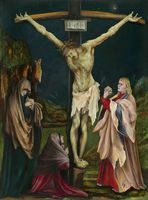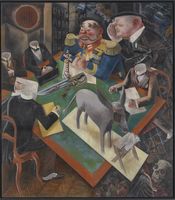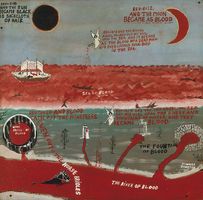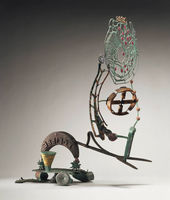Total Eclipse
Rufino Tamayo, Mexican, 1899–1991
Total Eclipse, ca. 1946
Oil and sand on canvas
Harvard Art Museums/Fogg Museum, gift of Mr. and Mrs. Joseph Pulitzer, Jr.
"If I could express with a single word what it is that distinguishes Tamayo from other painters, I would say without a moment's hesitation: Sun. For the sun is in all his pictures, whether we see it or not." – Octavio Paz, Nobel Prize–winning poet
Born in Mexico, Tamayo was a descendent of the Zapotec, a group of indigenous people largely concentrated in the southern state of Oaxaca. As an artist he sought to reconcile his Mesoamerican heritage with his training in European Modernism. In the 1940s, when many artists responded to the widespread destruction of World War II, Tamayo explored the frailty of the human psyche by painting humankind contending with forces of nature, such as the eclipse. According to Zapotec mythology, the total eclipse is an evil omen that prophesies disaster, warfare, or the end of the world. In Total Eclipse, a pitch-black moon shields the sun, and the blue heavens are filled with shards of darkness rather than rays of hopeful light. Below, a man and a woman with masklike faces frantically run from the nightmarish scene, driven into a state of extreme panic by witnessing the strange cosmic event. In mining the traditional beliefs of his ancestors, Tamayo uncovered an enduring, universal symbol of fear. In his work, the eclipse is not simply a premonition of catastrophe but is emblematic of the psychological anguish and overwhelming sense of helplessness felt in the wake of terror.
Heather Cammarata-Seale, Curatorial Associate for Modern and Contemporary Art, Princeton University Art Museum





















